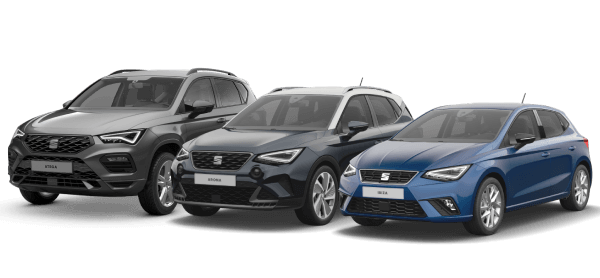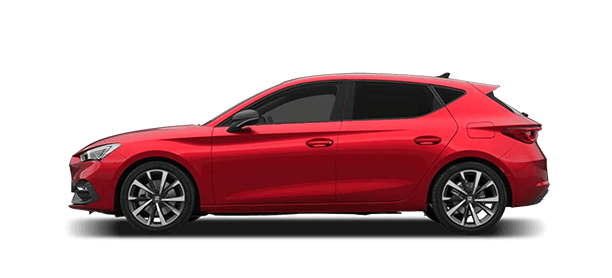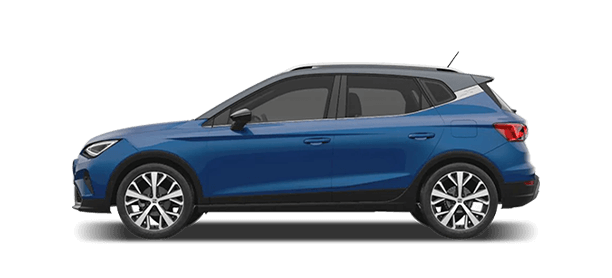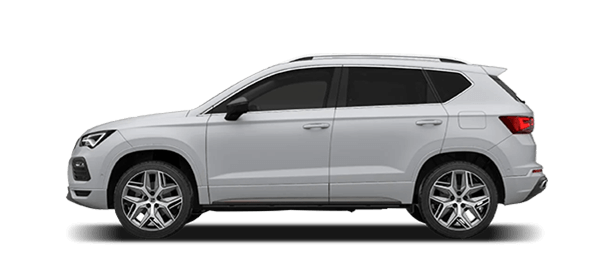Any person who’s ever taken a driving lesson will know that trying to keep an eye on your blind spot is a very important but sometimes difficult thing to do. Especially when driving big vehicles like trucks or SUVs, being aware of every angle around you is challenging.
Fortunately, we’re living in the Technological Age, and side assist software has become significantly sophisticated. Cars now have the ability to assist you in parking, reversing, and even staying in your lane on the highway. Best of all, SEAT can help you to improve your car safety by installing all of these features.
Let’s look at what a blind spot indicator is and how it benefits you as a driver.
What is a Blind Spot?
When driving, any area that doesn’t fall within your immediate vision or rear-view mirrors is a car blind spot. For example, if you’re driving on the highway and want to change lanes, you need to momentarily look over your shoulder to make sure the lane you want to move into is clear. This action is referred to as looking into your blind spot. Even when driving carefully, it’s possible to miss something, and it’s often one of the main causes of road accidents.
Blind spots don’t only apply when you’re on the highway. When reversing into a parking spot or out of a driveway, you can also encounter a few areas that are difficult to see. Even when getting out of your car, you might not be aware of how close you are to another car or object and you might hit it with your car door or step into oncoming traffic if you’re parked next to the road.
How Technology can Help
Here at SEAT, we take car safety very seriously. Blind spot detection is a vital part of safe driving, and we’ve made sure that our customers have only the best technology at their disposal.
Our blind spot detection system works with lasers that look out for other cars or obstacles around you. If you’re changing a lane and the beams detect an approaching car, they’ll alert you in time to avoid a collision.
Exit Assist helps you to safely reverse out of a driveway and alerts you of any coming traffic. If the software sees that you aren’t stopping, the car will stop by itself, keeping you from getting into a potentially fatal crash.
Accidents can sometimes not be avoided, which is where Collision Assist comes in. If the software detects that you’re most likely going to get into an accident, it automatically tightens your seatbelts and rolls up to your windows. This way, in the unfortunate event of an accident, you and your passengers are protected as much as possible against getting hurt.
Conclusion
It’s an automotive jungle out there, and we can’t always see everything that comes our way. That’s why it’s so important to take every possible precaution when driving. We here at SEAT pride ourselves on providing our customers with the best prohibitive features in their cars to avoid getting into accidents. Even if you do end up getting into a collision, we can program your car to protect you as much as possible.
If you’re interested in having safety features such as Side Assist, Exit Assist, blind spot mirrors, or Collision Assist installed into your car, feel free to contact your nearest SEAT branch. Not only can we install these and many other features, but we can also offer you brand new cars with blind spot detection. If you come to SEAT, you won’t need to go anywhere else for your automotive needs.
FAQs
These are some frequently asked questions drivers have regarding side assist software and blind spot warning systems.
Is a blind spot monitor worth it?
Drivers not seeing things in time is one of the main reasons road accidents occur. This is why a blind spot monitor is an invaluable investment.
What does blind spot monitoring do?
This monitoring helps you as a driver be aware of objects outside of your sightline to avoid getting into an accident.
Can you trust blind spot monitors?
Modern car blind spot sensors are very sophisticated and can help drivers avoid collisions. However, drivers must still remain vigilant and careful when they’re on the road as it doesn’t replace the human eye.
















